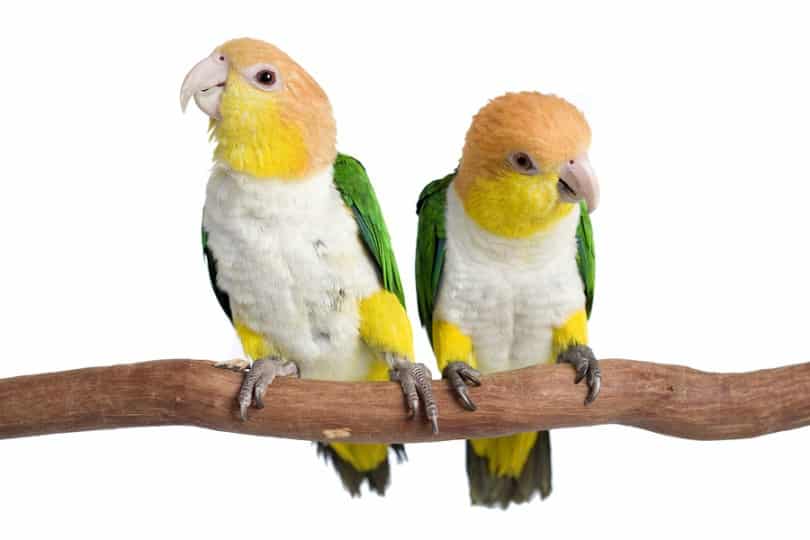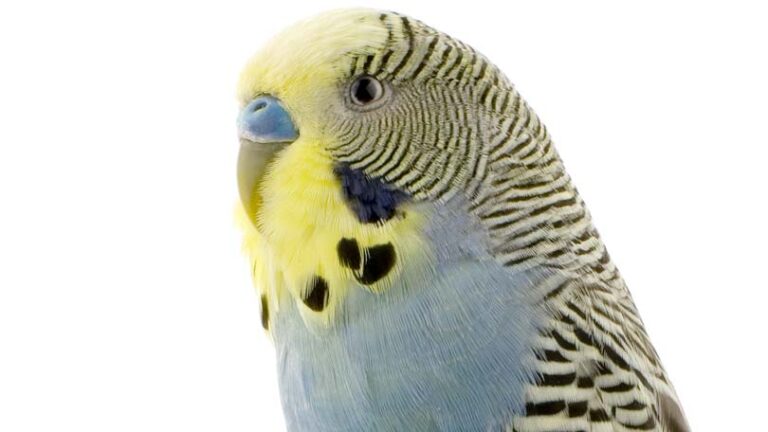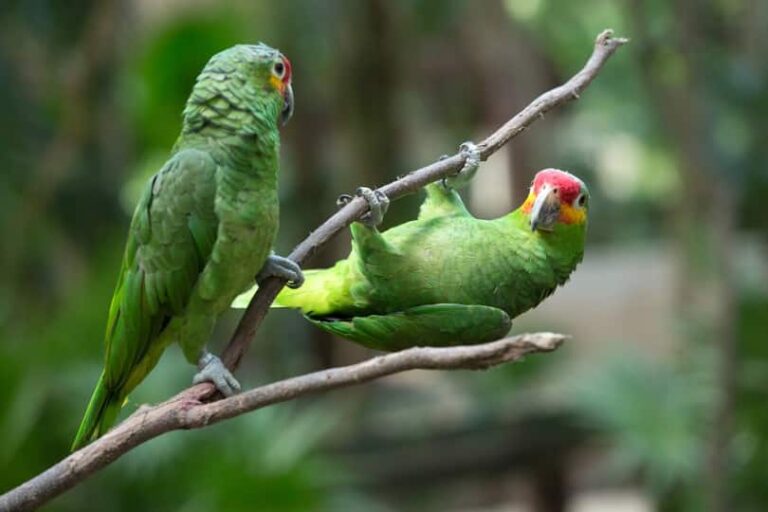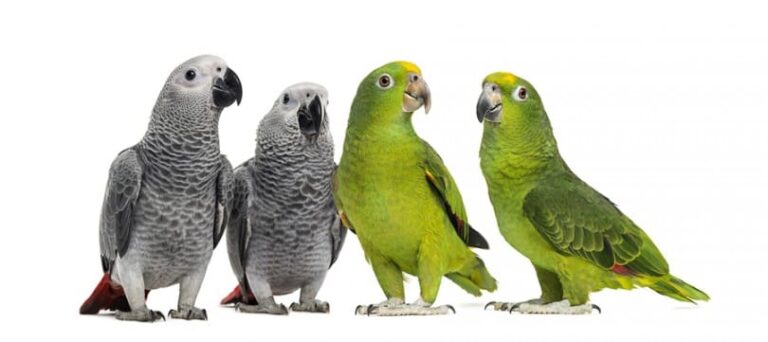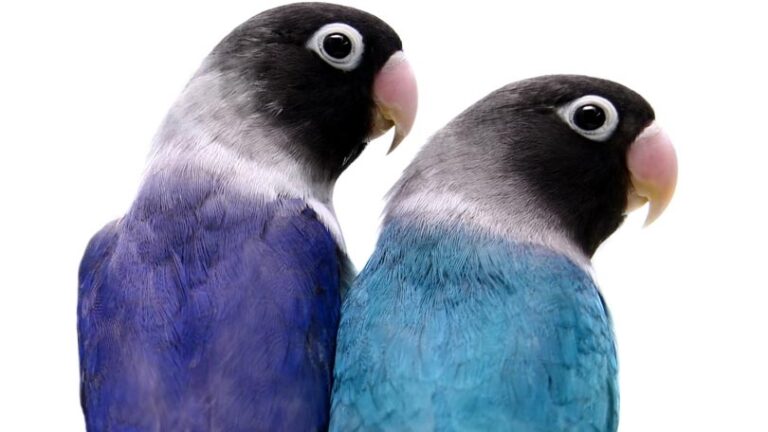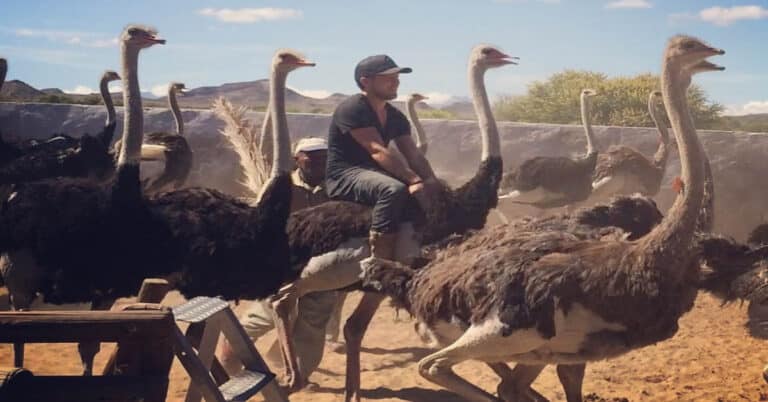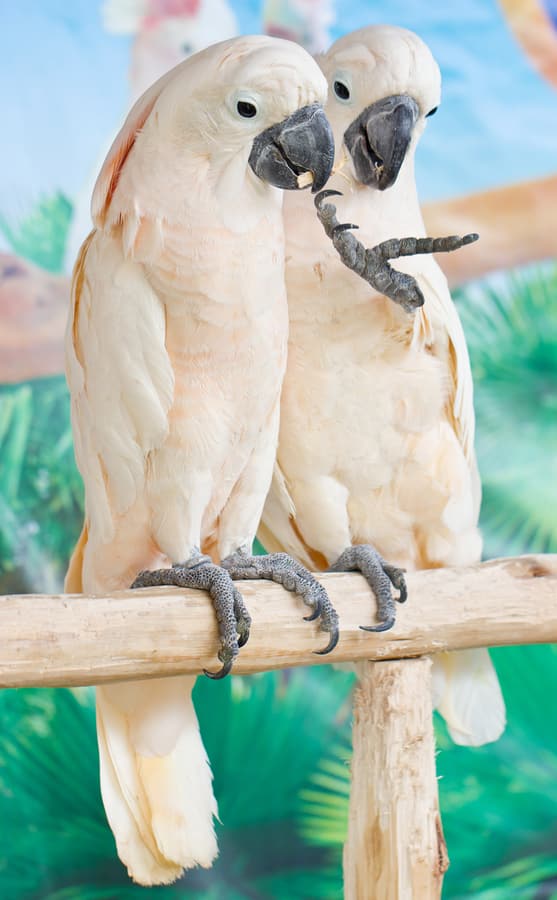White Bellied Caique
The White Bellied Caique, also known as the Green-thighed parrot, is biologically termed Pionites Leucogaster. It is a member of the Psittacidae family and Pionites genus. This species consists of three subspecies and all the birds of these subspecies are medium-sized parrots. The Caique is pronounced as “kigh-eek”. The distinct feature of this parrot is the white-colored belly and breast, which no other parrots possess, except the cockatoo species.
This beautiful bird can be recognized by its differently colored plumage like red, green, orange, yellow, and white. They are well known as the ‘clown of the parrot world’. They are very active, naughty, and playful. They try to be the center of attraction with their comical acts. The subspecies of the White-bellied Caique are P. Leucogaster Xanthurus, P. L. Xanthomeria; and. P. L. Leucogaster.
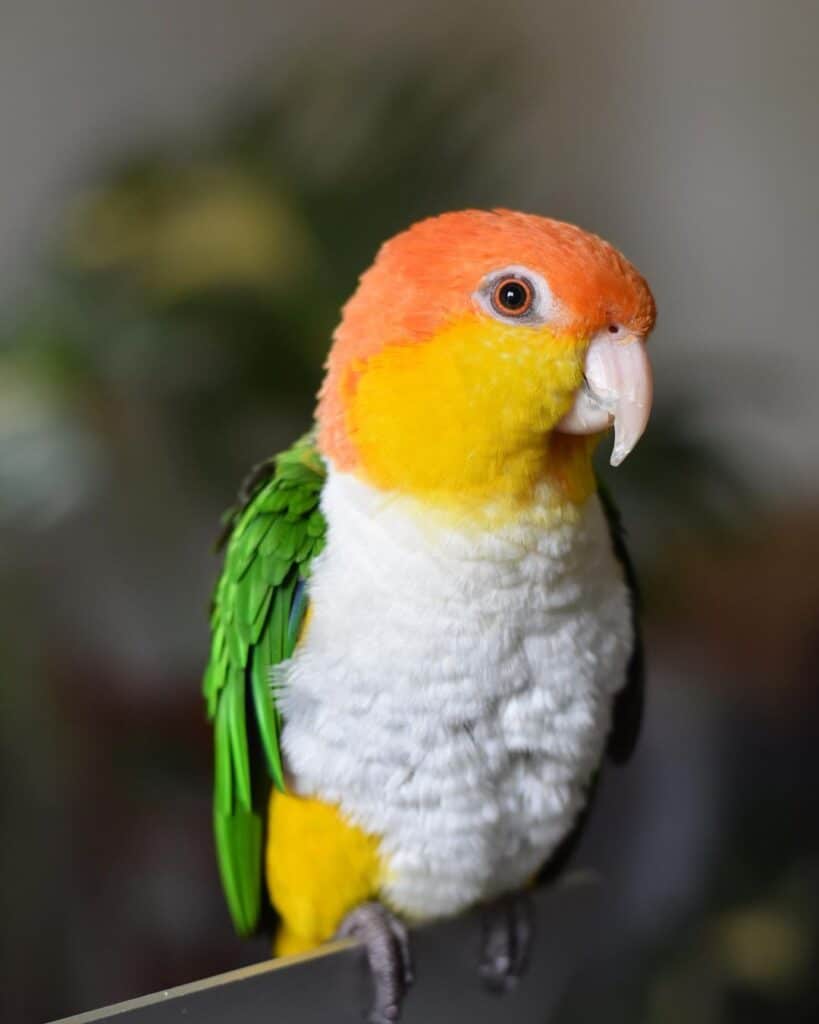
Description
This amazing bird has a combination of colors on its body. The White Bellied Caique has obviously a white belly, orange-yellow vent and head and green thighs, wings and back portion. Their primary feathers have a blue shade, and the beak is strong and pink in color. The legs and toes are also tender and pink in color. The birds of the three subspecies differ in color combination, especially the coloration of tail and thighs, but all have one thing in common and that is the white underbelly. The Xantharus species have a short yellow tail, whereas the other two species have a green colored tail with yellow under cover. They attain an average length of 23cm and weigh 165g. The juvenile White Bellied Caique resembles the Black Headed Caique, because the young ones have black feathers on the nape and head, just like the latter one. They also have yellow colored feathers on the belly. Generally the black feather on the crown and the yellow feather on the belly will be replaced by white or orange, when they turn 6 months or 1 year old. The irises of the young ones are brown shaded, which changes gradually into an orange or rust color as they grow.
Habitat
The White Bellied Caique inhabits the regions of Brazil, Bolivia and Peru. They can be commonly found in the lowland forests, where there are water bodies in the surroundings. They always travel in a flock, and live in colonies. They fly with the family to the rainforest to feed on the nuts and fruits from the rainforest trees. However, these birds are now getting extinct in an alarming state due to lack and loss of habitat. The rainforests of Brazil are disappearing due to which, the population of many species, including the White Bellied Caique has decreased.
Behavior
These small parrots are very social and mingle easily. They are very intelligent, enthusiastic, and energetic. They love to interact with humans or other birds. They show interest in learning tricks, and showing off those tricks to others. They always keep themselves busy by chewing, flying, playing or climbing. In the wild, they are always seen in groups or pairs. At times, they can be aggressive towards humans. When they are overloaded with feelings and emotions, they can bite. An expert’s training is sufficient to turn these notorious birds into loving and caring creatures.
Reproduction
The male and the female White-bellied Caique looks similar in appearance. Normally, they attain sexual maturity by the age of 2. In the wild, like the other parrots, they too prefer cavities or hollows in the trees of the rainforest, for breeding. While breeding at home, provide a spacious nest box or breeding cage in which, they can be comfortable to breed. The female bird lays 2 to 4 eggs in a clutch. In a year, only two clutches of eggs are produced by the female bird. She incubates for 27 days, while the male bird feeds her, and stands guard near the nest box. They are basically good at parenting. They take care of the little ones till 10 weeks old, after which they fly independently and leave the nest.
White Bellied Caique At home
Cage
Like the other pet birds, a White Bellied Caique too prefers a roomy cage and spacious environment. If you are willing to keep your pet outside the cage most of the time, then a small cage will do. Like we feel safe inside our house, they too feel comfortable and safe inside their cage. You can free the birds out of their cage, if you can assure the safety of this pet from other risks like pet dogs and cats. These birds are very active and playful, hence there must have enough space to move around, play or climb. Size wise, a cockatiel cage that has 24 x 24 x 24 inch is perfect for these birds. A stainless steel cage painted with non-toxic paint would be preferred.. Place a few perches, swings, toys and dishes for food and water. If there are horizontal bars, then it is well and good, as they can climb up and down and thus keep themselves busy. If your pet is confined to a small cage, it will suffer from weakness and diseases due to the lack of exercise and activity inside the small cage. Hence, for your pet’s well being, buy a cage as big as you can.
Food
The wild White Bellied Caique eats nuts, seed and fruits. Now-a-days, a lot of Psittacine diet mixes are available in the market that are best suited for these birds. This supplement food mix consists of
- Fortified seed mix suitable for large parrots
- Graystripe, large seeds of sunflower
- “Amazon Crunch” brand pellets
- ZuPreem brand monkey chow
- Fruits and vegetables chopped and mixed that include grapefruit, apple, orange, cooked sweet potato, grapes, melons, peas, corns, broccoli, beets, squash and leafy greens.
A combination of seed mix and fruit-vegetable mix should be included in the diet. The perfect ratio of seeds to the fruits should be in the ratio of 1:1.5. Nutri-Berries are a perfect food combination for these birds as it contains balanced nutrition. Cuttlebone can also be provided for the supplementation of minerals.. A powdered and soluble form of multivitamin is available in the markets, which should be mixed in the drinking water given to these birds.
Care
Never leave your pet without supervision, especially when they are out of the cage. Provide enough chewing and playing toys to keep them busy and relieve boredom. The water and food dishes should be regularly cleaned, and the drinking water should be changed daily. The cage should be cleaned once in a week with disinfectant, while the pet should be placed in a separate room. The fumes of the disinfectants can be harmful to those little creatures. Before placing them back in the cage, make sure the cage is dried under the sun. Take your White Bellied Caique pet regularly to a veterinary doctor to keep its health updates.

Having discovered a fondness for insects while pursuing her degree in Biology, Randi Jones was quite bugged to know that people usually dismissed these little creatures as “creepy-crawlies”.

